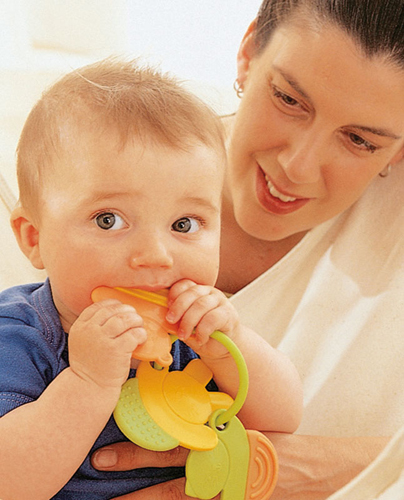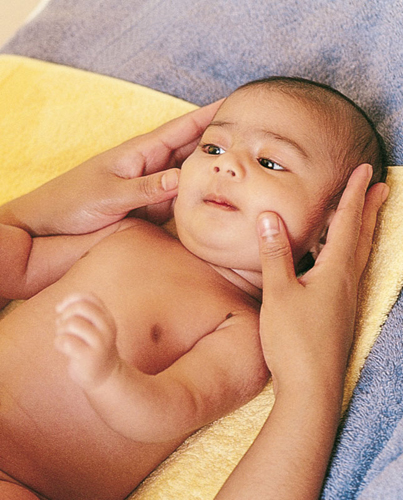Your baby may not show any signs of teething or,
indeed, teeth themselves, until well into her first year of life. Some
babies, however, begin teething as early as three months, so it makes
sense to be prepared.
Signs of teething
Irritability and fussiness as her gums become sore and painful; the first tooth is often the worst
Drooling
Coughing or gagging, as a result of extra saliva A rash on her chin, mainly due to the drooling Gnawing, gumming, and biting everything she puts in her mouth Rubbing her cheeks and pulling her ears—the pain travels to the ear area and around the jaw Mild diarrhea—this
is a contentious one, since some professionals think this symptom is
not linked, but a good Australian study recently found that slightly
looser bowel movements are a common symptom A slightly raised temperature—while
a high fever is not a sign of teething and should be treated with
caution, a low-grade fever can result from teething in some little ones;
again, some doctors disagree, but parents report that it’s very common
Poor sleep
A runny nose, as the ear, nose, and throat area become a little inflamed
What to do
It’s all in the genes
The process of
teething often follows hereditary patterns, so if you or your partner
teethed early or late, your baby may follow the same pattern.


Offer your baby a cool teething ring (not one made of PVC) to gnaw on, and rub her gums with a clean finger Letting her chew on a clean, cool washcloth may also help Look for a gentle teething gel to rub into her gums—many contain benzocaine, a local anesthetic; you may also consider giving acetaminophen for pain relief Homeopathic teething remedies
can be found in most large supermarkets and pharmacies, and usually
contain the remedy Chamomilla, which is traditionally used to ease your
baby’s symptoms—check with your pediatrician before using If your baby has trouble sleeping, gentle rocking may help
|